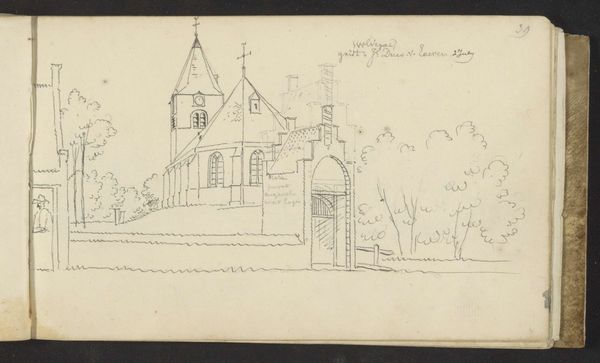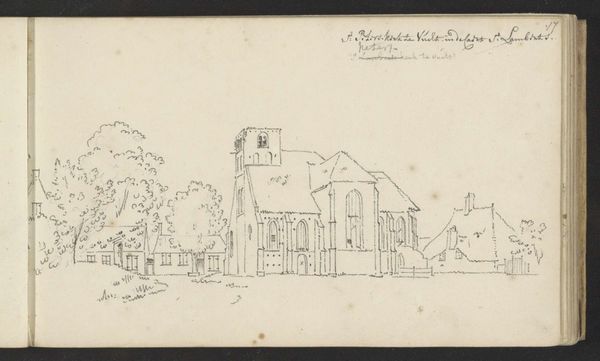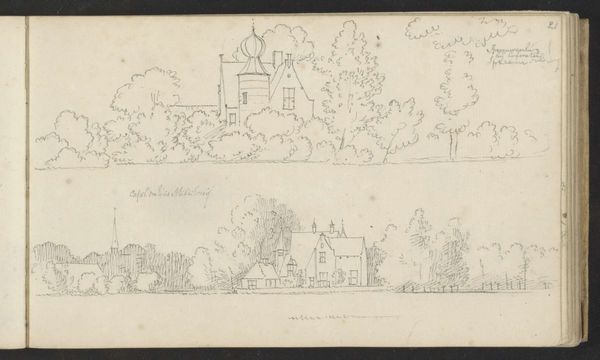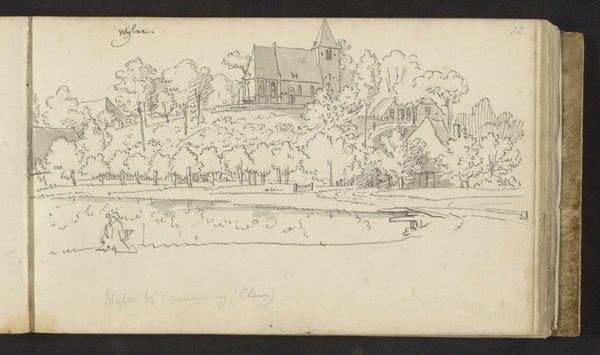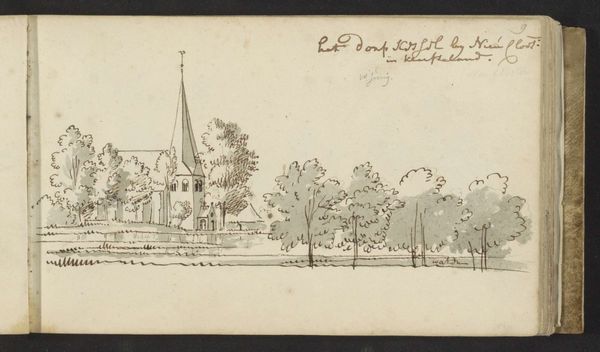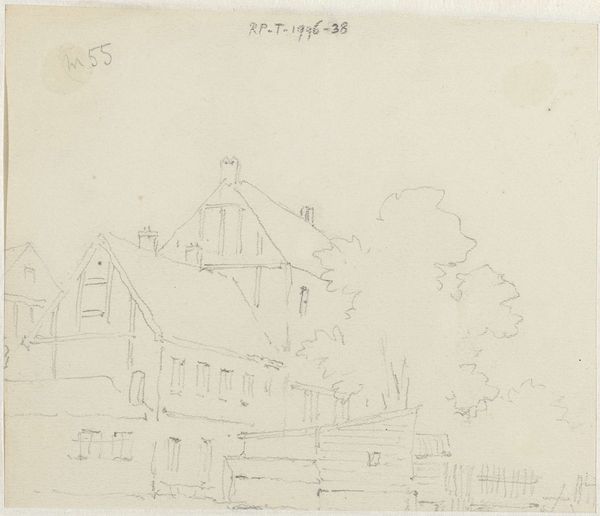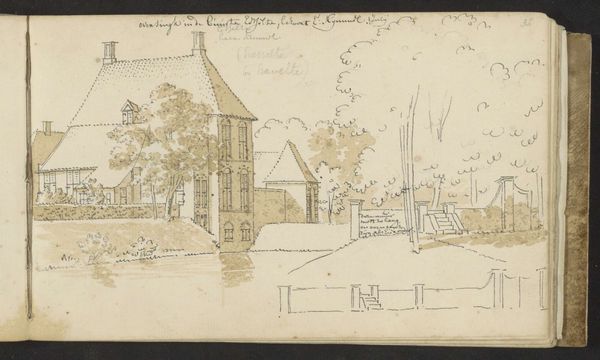
drawing, ink, pen
#
drawing
#
quirky sketch
#
dutch-golden-age
#
pen sketch
#
sketch book
#
landscape
#
personal sketchbook
#
ink
#
sketchwork
#
pen-ink sketch
#
pen work
#
sketchbook drawing
#
pen
#
cityscape
#
storyboard and sketchbook work
#
sketchbook art
Copyright: Rijks Museum: Open Domain
Editor: So, here we have "Dorpsgezicht met kerk te Dwingeloo," attributed to Abraham de Haen, probably from around 1732-1737. It’s an ink and pen drawing. It feels like a very immediate record of a specific place, almost like a snapshot, even though it’s clearly made by hand. What stands out to you? Curator: Well, it's precisely the immediacy you mention that captures my attention. Here we see the means of production laid bare: pen, ink, paper. Think of the accessibility of these materials in the 18th century, the relative ease with which one could capture the image of a place. How does this challenge our notion of ‘high art’ when compared to, say, an oil painting from the same era? The labor is less intensive, the materials cheaper. Editor: That's a good point, it does feel like a completely different kind of artistic intention compared to something like a formal portrait. But did this kind of quick sketch have a purpose beyond just recording what the artist saw? Curator: Absolutely. Consider the social context. The rise of travel, even amongst the middle class, created a market for images of places. These sketches, though seemingly simple, became commodities. Think of them as early postcards. How does understanding the material and economic realities behind the drawing shift your interpretation of it? It’s no longer just a quaint scene. Editor: It makes me think about how artists at the time navigated different social classes and their tastes in art, or maybe a tension between valuing ‘high art’ and selling quick drawings. Curator: Precisely! The relationship between art, labour, and consumption is key here. How does it all relate to what's valued in the art world, and how does that change over time? Editor: This has given me a totally different view on sketches. It makes me wonder about who was buying this, and why they valued a sketch over a detailed painting! Curator: Indeed. Thinking about materiality can lead us to appreciate the complex networks of production, consumption and taste that shaped artistic practice in the past, and continue to do so.
Comments
No comments
Be the first to comment and join the conversation on the ultimate creative platform.
